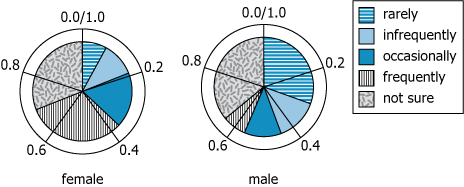Events & Promotions
|
|

GMAT Club Daily Prep
Thank you for using the timer - this advanced tool can estimate your performance and suggest more practice questions. We have subscribed you to Daily Prep Questions via email.
Customized
for You
Track
Your Progress
Practice
Pays
Not interested in getting valuable practice questions and articles delivered to your email? No problem, unsubscribe here.
- Nov 19
12:30 PM EST
-01:30 PM EST
Learn how Keshav, a Chartered Accountant, scored an impressive 705 on GMAT in just 30 days with GMATWhiz's expert guidance. In this video, he shares preparation tips and strategies that worked for him, including the mock, time management, and more - Nov 18
11:00 AM PST
-12:00 PM PST
Join us in a live GMAT practice session and solve 30 challenging GMAT questions with other test takers in timed conditions, covering GMAT Quant, Data Sufficiency, Data Insights, Reading Comprehension, and Critical Reasoning questions. - Nov 20
01:30 PM EST
-02:30 PM IST
Learn how Kamakshi achieved a GMAT 675 with an impressive 96th %ile in Data Insights. Discover the unique methods and exam strategies that helped her excel in DI along with other sections for a balanced and high score. - Nov 22
11:00 AM IST
-01:00 PM IST
Do RC/MSR passages scare you? e-GMAT is conducting a masterclass to help you learn – Learn effective reading strategies Tackle difficult RC & MSR with confidence Excel in timed test environment - Nov 23
11:00 AM IST
-01:00 PM IST
Attend this free GMAT Algebra Webinar and learn how to master the most challenging Inequalities and Absolute Value problems with ease. - Nov 24
07:00 PM PST
-08:00 PM PST
Full-length FE mock with insightful analytics, weakness diagnosis, and video explanations! - Nov 25
10:00 AM EST
-11:00 AM EST
Prefer video-based learning? The Target Test Prep OnDemand course is a one-of-a-kind video masterclass featuring 400 hours of lecture-style teaching by Scott Woodbury-Stewart, founder of Target Test Prep and one of the most accomplished GMAT instructors.
Kudos
Bookmarks
Dropdown 1: 20% of the female
Dropdown 2: Infrequently
Be sure to select an answer first to save it in the Error Log before revealing the correct answer (OA)!
Difficulty:
 95%
(hard)
95%
(hard)
Question Stats:
44% (01:56) correct 56%
(02:30)
wrong
56%
(02:30)
wrong  based on 2739
sessions
based on 2739
sessions
History
Date
Time
Result
Not Attempted Yet

The two charts show how female and male survey respondents answered a question about how often they ate a certain type of food. The survey specified that "infrequently" meant more often than "rarely" but less often than "occasionally."
Select from the drop-down menus the options that create the statement that most accurately reflects the information provided.
Slightly less than respondents indicated that they ate the food at most .

The two charts show how female and male survey respondents answered a question about how often they ate a certain type of food. The survey specified that "infrequently" meant more often than "rarely" but less often than "occasionally."
Select from the drop-down menus the options that create the statement that most accurately reflects the information provided.
Slightly less than respondents indicated that they ate the food at most .
ID: 700243
ShowHide Answer
Official Answer
Dropdown 1: 20% of the female
Dropdown 2: Infrequently
Kudos
Bookmarks
This is an amazing question that has at least 3 additional layers of complexity in it over and above what a typical Graphics Interpretation question entails.
Complexity # 1:
The dataset presents a qualitative scale that needs to be visualized into a scale such that we can translate what “atmost rarely or infrequently or occasionally” means.
Complexity # 2:
As you know a GI question has two blanks. Some of these blanks are two independent statements. And some have dependent blanks. This question statement is of the latter category and hence is worded such that we need to process both the blanks together. This interdependence increases the complexity of processing.
Complexity # 3:
The pie chart needs to be read and interpreted properly so that we can extract the correct information as required to answer the question asked.
So, as you go through this video solution pay close attention to how “owning the dataset” approach will help you navigate through the complexities in this GI question.
Let us know if you have any questions.
Complexity # 1:
The dataset presents a qualitative scale that needs to be visualized into a scale such that we can translate what “atmost rarely or infrequently or occasionally” means.
Complexity # 2:
As you know a GI question has two blanks. Some of these blanks are two independent statements. And some have dependent blanks. This question statement is of the latter category and hence is worded such that we need to process both the blanks together. This interdependence increases the complexity of processing.
Complexity # 3:
The pie chart needs to be read and interpreted properly so that we can extract the correct information as required to answer the question asked.
So, as you go through this video solution pay close attention to how “owning the dataset” approach will help you navigate through the complexities in this GI question.
Let us know if you have any questions.
General Discussion
Kudos
Bookmarks
Although I got this wrong, does "at most" includes "rarely and infrequently" both ? If that is the case, then 20% females and infrequently should be the answer.
I did not notice the at most part and marked 30% male and rarely instead.
I did not notice the at most part and marked 30% male and rarely instead.















